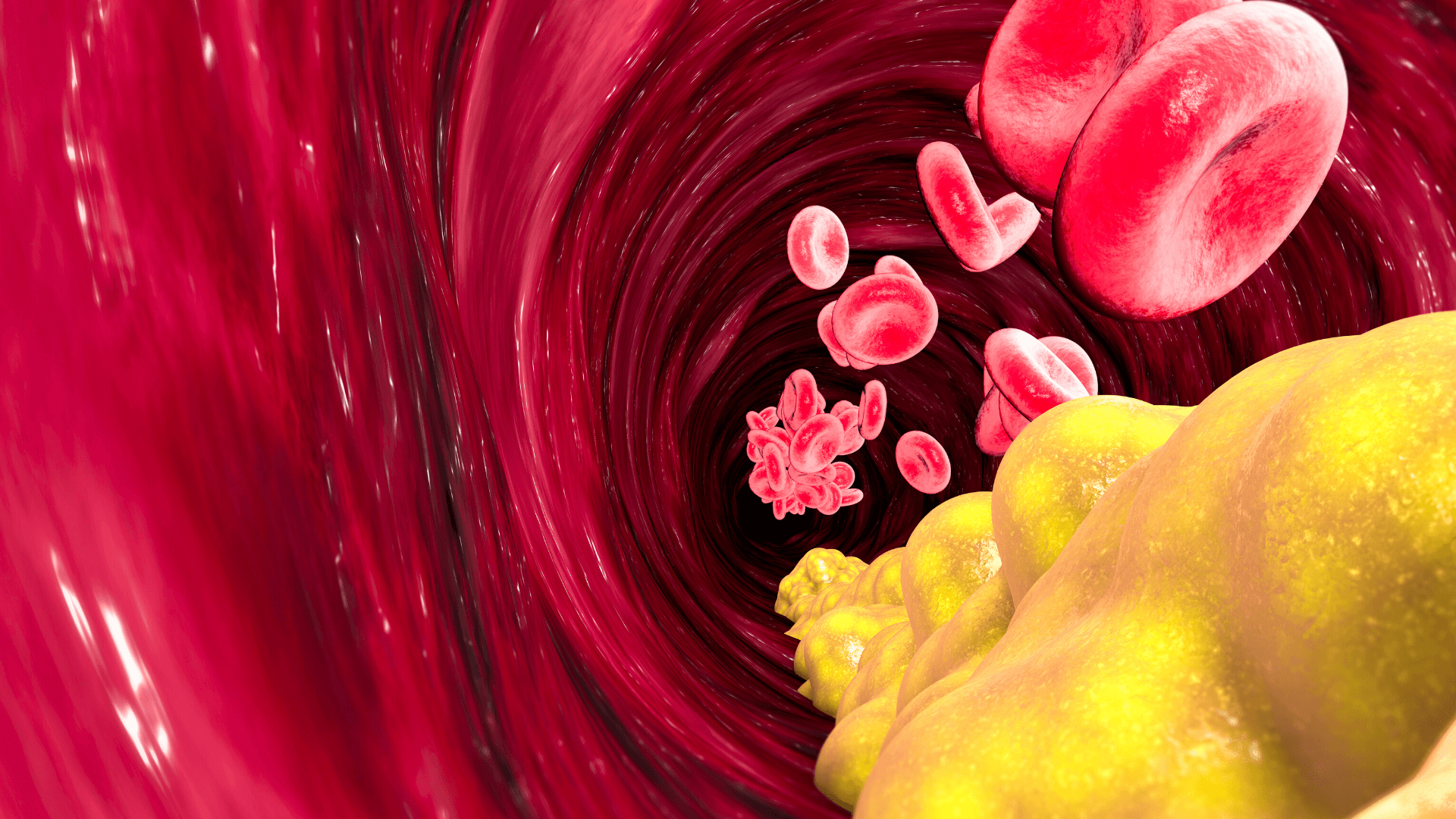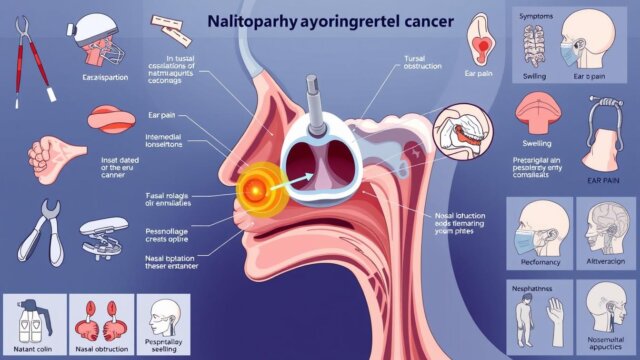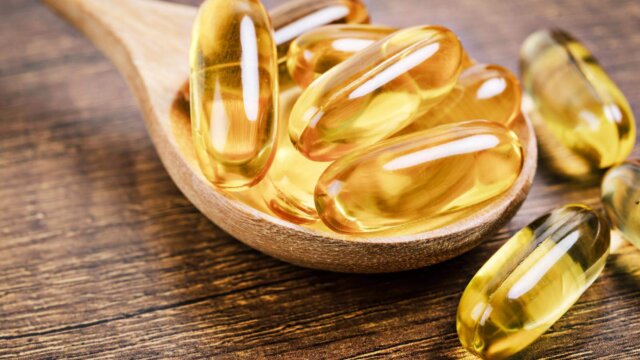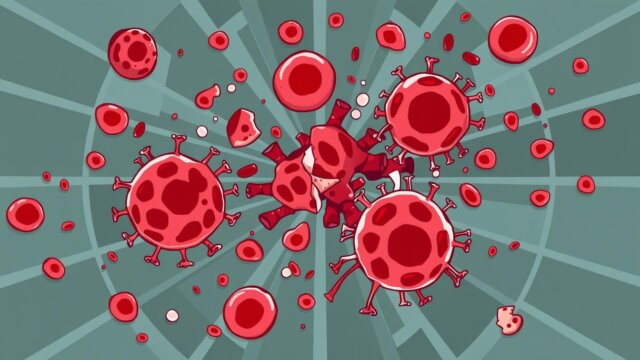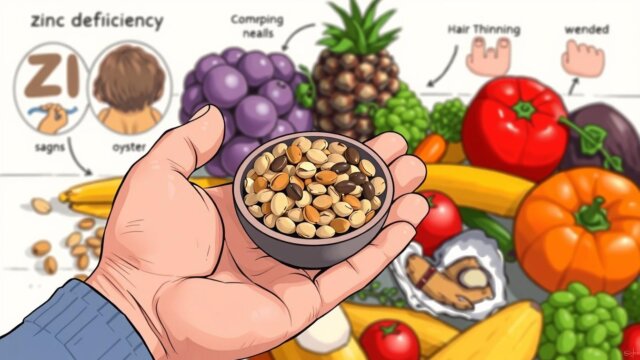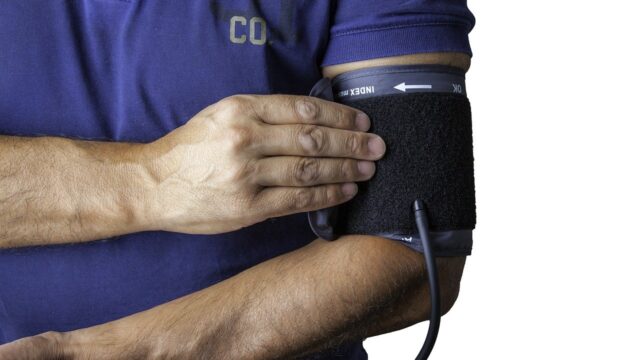FTC disclaimer: This post may contains affiliate links and we will be compensated if you click on a link and make a purchase.
High cholesterol can cause serious health problems like heart attack, stroke, and if left untreated, it can lead to death.
Proper treatment for high cholesterol can help you to avoid any future complications.
If you would like to know whether you have high cholesterol or not, consult your doctor for a cholesterol test. If you are diagnosed with high cholesterol, then ask for treatment.
Here, we will discuss the effects of high cholesterol and the risk factors associated with it.
Further, we will look for high cholesterol symptoms, what natural treatment is available, and how to manage it by changing your diet.
The Effects of High Cholesterol
Medical researchers have established a link between coronary heart disease with obesity, diabetes, high blood pressure, high cholesterol, smoking, and, more recently, high triglycerides.
Coronary heart disease (known as coronary artery disease) is the number one killer of both men and women in the United States.
High cholesterol mainly contributes to greater than 60 percent of cases of coronary heart disease worldwide.
Deposits of cholesterol can bring about atherosclerosis – the thickening and hardening of the arteries caused by plaque buildup.
In coronary heart disease, atherosclerosis of the coronary arteries (the vessels that supply blood to the heart) decreases the cardiac muscle’s blood and oxygen supply.
The shortage of blood and oxygen can cause angina and often results in irreversible damage to cardiac tissues and, if left untreated, may lead to a fatal heart attack.
As a general rule, blood cholesterol levels become a concern for men over 45 and women over 55.
Medical professionals recommend that all adults, regardless of age or gender, have their cholesterol checked at least every five years.
High cholesterol affects an estimated 29 million adult Americans. It is most prevalent among women aging between 65 to 74.
High cholesterol contributes to more than 2.6 million deaths worldwide (as per WHO), with deaths among women higher than men.
An evaluation of both cholesterol and triglyceride levels can be used to help assess a person’s general health. Specifically, these levels help assess the arteries’ condition, including those that supply blood to the heart.
What are triglycerides and cholesterol?
They are two important fats (lipids) produced by the liver and circulate in the blood as components of larger molecules called lipoproteins.
People with high cholesterol and triglyceride levels of these lipoproteins have a condition called hyperlipidemia.
What is Cholesterol?
Cholesterol is a waxy fat found in the body and, despite what you may have been told, is a necessary nutrient for the body.
Moreover, cholesterol is used in cell membranes and plays an important role in producing hormones, bile, and vitamin D.
Cholesterol mainly comes from two sources: the foods that we eat, such as meat, dairy products, and eggs, and your own liver, which produces about eighty percent of all the cholesterol in the body.
That means that only about twenty percent of our total cholesterol is obtained from food.
Since cholesterol is not water-soluble, the liver packages the cholesterol into tiny spheres called lipoproteins to be transported through the blood.
Type of Lipoproteins
The lipoproteins can be divided into two different categories: low density and high-density lipoproteins.
LDL lipoproteins – Low-density lipoprotein (LDL)
LDL, often dubbed as “bad” cholesterol, carries most of the cholesterol in the blood and seems to play a vital role in the deposition of fat in arteries.
This deposition of fat results in blockages called plaque.
In addition to narrowing the arteries and increasing blood pressure, plaque contributes to the hardening of artery walls, a condition known as atherosclerosis.
HDL lipoproteins – High-density lipoprotein (HDL)
HDL is known as “good” cholesterol. It carries cholesterol from the blood back to the liver for elimination. It is also responsible for removing the plaque buildup along the artery walls.
Elevated HDL levels are very desirable because they help clear blockages in the arteries, reduce LDL, and decrease blood pressure.
What are Triglycerides?
Triglycerides are lipids normally found in increased blood levels following the digestion of fats in the intestine.
Consumed calories that are not immediately used are stored as fat cells in the form of triglycerides. When needed, it is released from fatty tissues and works as an energy source between meals.
The major transporter of triglycerides is a forerunner of LDL, a simpler molecule known as VLDL (very low-density lipoprotein).
As the VLDL loses triglycerides, the VLDL particle is converted into intermediate and then low-density lipoprotein.
Over time, elevated triglyceride levels may result in pancreatitis—a condition that can cause malabsorption of nutrients, which further results in diabetes.
As pancreatitis is on the rise, damage can spread to other organs, including the heart, lungs, and kidneys.
High triglyceride levels also promote the deposition of cholesterol in the arteries and are associated with known risk factors for heart disease.
The exact role triglycerides play as an independent risk factor is not yet clear because people with high LDL and low HDL levels also have high triglyceride levels.
However, these below researchers beg to differ.
One study conducted by Koren-Morag, Graff, and Goldbourt, published in the American Heart Association journal Circulation.
In that study, it was found that individuals with elevated triglyceride levels have a nearly thirty percent increased probability of suffering from a stroke.
Further, it illustrated that they have taken into consideration of other risk factors such as cholesterol levels.
One of the most important aspects of the study is that it clarifies the independent link of triglyceride levels to stroke, meaning that a causal relationship is likely.
What is Plaque?
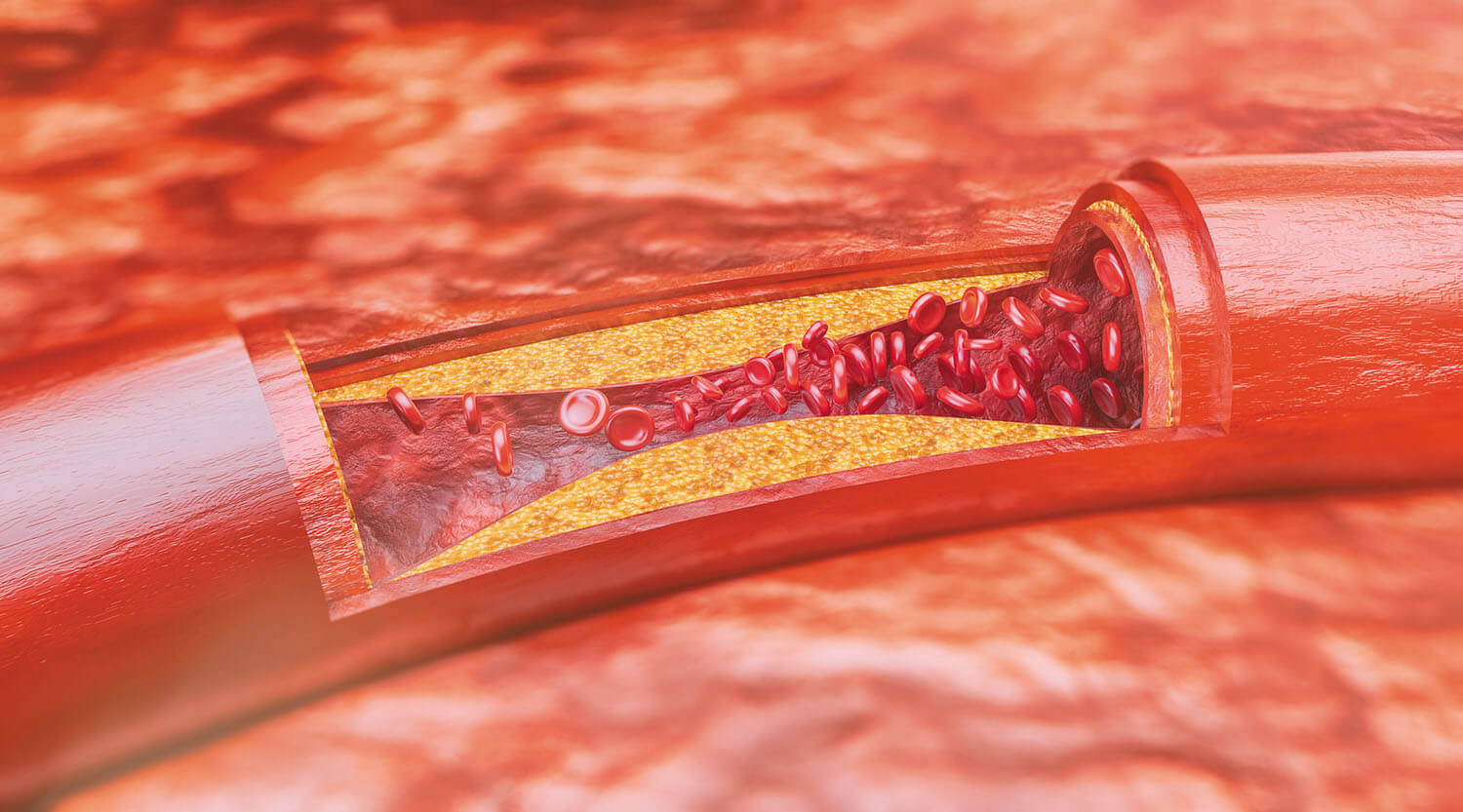
Plaque is excess LDL cholesterol that clings to arterial walls as it is transported through the system. Macrophages eat the LDL and become “foam cells.”
The cells eventually rupture and begin to form a lipid layer called plaque.
Connective fibers form in and around the fatty layer, causing it to harden. Over time, the fibrous layer thickens, narrowing the arterial pathway.
When calcium deposits form a crust, the plaque becomes brittle and is more likely to rupture.
The Problem With Plaque
High blood cholesterol levels increase the likelihood of deposition of fat as plaque on arterial walls’ inner surface.
As these deposits increase, the artery’s channel narrows, contributing to an increase in blood pressure.
In such a condition, the heart must work harder to pump the same volume of blood through the narrowed arteries to compensate.
When coronary arteries are affected by plaque, the more hardened working heart receives less oxygen, thus increasing the heart attack risk.
Plaque also contributes to the hardening of the arteries or atherosclerosis. This loss of flexibility in arterial walls elevates blood pressure, putting the heart at additional risk.
When the plaque deposits become unstable, they burst, releasing their cholesterol into the bloodstream all at once.
This can trigger clotting in small coronary arteries. When the artery is completely obstructed, blood flow stops, and a heart attack occurs.
Symptoms of High Cholesterol
Higher cholesterol signs and symptoms are not apparent, and therefore most people don’t know they have high cholesterol until the result is something more severe.
The noticeable signs and symptoms tend to be uncommon; however, it can certainly be noticed having an easy bloodstream check.
The symptoms and outcome of high cholesterol should be studied carefully before it gets worse.
Medical issues, for example, heart disease, heart stroke, and peripheral vascular illness, tend to be probably the most typical sign and symptoms of high cholesterol.
Many people possess familial hypercholesterolemia that passes through families. It is a genetic disorder that is considered and regarded as a sign and symptom of high cholesterol.
The unique visible cues consist of debris associated with extra cholesterol selections within the pores and skin, eyelid cells, and debris upon nodules within muscles from the fingers and foot.
In some instances, yellow-colored blotches within the fingers might be visible cues associated with lipid problems and extra cholesterol.
In the look of these points, you need to seek advice from your physician to develop the strategy to change the results.
Altering your way of life is the ultimate option that helps you reduce the probabilities of occurring high cholesterol and its related disease.
High Cholesterol Causes and Risk Factors: It Goes Beyond Diet
Several factors can contribute to increased cholesterol in the blood and subsequent heart disease.
Some, such as family history, age, and gender, are beyond your control, while others, such as daily activity, diet, and stress, can be controlled.
It’s all in the Genes
Genetics plays a key role in determining the rate at which cholesterol is produced and removed from the bloodstream.
This factor alone can result in high LDL and premature coronary heart disease. If your parents, grandparents, brothers, and sisters have high cholesterol, the chances are high that you’ll develop it as well.
Age and Gender
Cholesterol levels tend to rise with age. Before menopause, women generally have a lower level of cholesterol than men their age.
After menopause, a significant rise in LDL levels coupled with a drop in HDL levels puts women at higher risk.
While hormone therapy has successfully stabilized cholesterol levels in postmenopausal women, a rise in triglycerides tends to be a side effect.
Usually, men with age 45 and above and women aged 55 and above should closely watch their cholesterol levels.
The High Fat Diet
Because the body itself manufactures cholesterol, a high-fat diet is not necessarily the cause of high cholesterol, as per studies.
However, a diet high in unhealthy saturated fat derived from processed food can increase body weight and contribute to the development of high body fat percentage, as per the World Heart Federation report.
The Sedentary Lifestyle
If your lifestyle includes little physical activity, then the risk of heart disease will increase along with increased body fat and weight gain, as per the Luxembourg study.
Further, it increases the risk of getting angina, heart attack, stroke, and other cardiovascular problems.
Body Weight
Bodyweight is determined by a combination of factors as well, including your diet and your lifestyle.
Excessive body weight needs to watch because it likely creates a problem for your cardiovascular system.
Besides, your body fat percentage should not be above an acceptable level: 32 percent for women and 25 percent for men.
Carrying excess body weight generally increases your LDL cholesterol level. Also, being overweight puts you at high risk for heart disease.
Increasing your body weight with muscle mass from “bodybuilding” and “bulking up” with protein may not cause a cholesterol problem, as long as those proteins are lean and unprocessed.
Alcohol consumption
Alcoholic beverages can be a risk factor for heart disease. Besides, excessive drinking can result in high blood pressure and damage to the heart wall. Additionally, it also gives rise to triglyceride levels.
Smoking
As per clinical research, smoking reduces your HDL cholesterol level.
Nicotine is also a vasoconstrictor, which means narrowing the blood vessels resulting from contraction of the vessels’ muscular wall.
So, blood is further prevented from flowing through arteries which already clogged by plaque.
Eating disorder
Long-term stress that changes eating habits may promote high LDL because people are often inclined towards unhealthy “comfort foods” during times of stress, as per research studies.
Diabetes
People with other health conditions such as diabetes should monitor their cholesterol levels.
Clinical research has shown that diabetes can disrupt HDL and LDL balance, making people with diabetes much more susceptible to artery damage.
How to Prevent High Cholesterol Risk Factors
Clearly, the more risk factors you have, the higher your risk of cardiovascular disease.
The greater your risk, the more significant the need for you to lower your LDL.
You can counter high cholesterol by eliminating as many of these causes as possible. Replace inactivity with regular aerobic exercise.
Start a heart-smart diet and, if weight is an issue, look for the diet that will also help you decrease excess body fat. Stop smoking. Limit alcohol consumption. If you have diabetes, maintain strict control of your blood sugar level.
Measuring Cholesterol Levels
Hyperlipidemia is the general term that refers to high blood cholesterol and elevated blood triglycerides.
We now know that elevated triglycerides promote the deposition of cholesterol in the arteries, which results in atherosclerosis.
Monitoring HDL and LDL Levels
Talk to your physician about regularly monitoring your level of HDL and LDL cholesterol.
These levels can give your physician valuable information to help determine your risk for cardiovascular disease.
Normal Cholesterol Levels
A single number does not represent normal levels. They should ideally fall somewhere in the described range of values to be considered as “normal.”
The following normal ranges have been established:
- LDL: less than 100 mg/dL
- HDL: greater than 40 mg/dL
- Total Cholesterol: less than 200 mg/dL
- Triglycerides: 100 mg/dL to 150 mg/dL.
This range of values varies with age. For instance, a 25-year-old person with an LDL of 160 mg/dL is vastly different from a healthy 75-year-old whose LDL is above 160 mg/dL.
Moreover, the 25-year-old person would be at risk for cardiovascular disease, primarily if a genetic predisposition exists.
Elevated triglycerides often accompany low levels of circulating HDL.
HDL values below 35 mg/dL are considered a separate risk factor for heart disease. Increasing levels of HDL is key to reducing triglycerides and LDL.
Blood Triglyceride and Cholesterol Level Check
Cholesterol level guidelines published by both the American Heart Association (AHA) and the National Cholesterol Education Program (NCEP) specify these measures:
Cholesterol Level | Blood Concentration (mg/dL) |
|---|---|
Desirable | |
Borderline High | 200 to 239 |
High | > 240 |
LDL Cholesterol Level | Blood Concentration (mg/dL) |
|---|---|
Optimal | |
Near-Optimal/Above Optimal | 100 to 129 |
Borderline High | 130 to 159 |
High | 160 to 189 |
Very High | > 190 |
HDL Cholesterol Level | Blood Concentration (mg/dL) |
|---|---|
Low (Men), Increased Risk | |
Low (Women), Increased Risk | |
High (Ideal) | > 60 |
Triglyceride Level | Blood Concentration (mg/dL) |
|---|---|
Ideal | |
Normal | 100 to 150 |
Borderline High | 150 to 200 |
High | 200 to 500 |
Very High | 500 to 1000 |
Extreme | > 1000 |
The general recommendation is that persons over the age of 20 should have their cholesterol levels measured once every 5 years.
The best method for measuring cholesterol levels is with a blood test called a lipid panel or lipid profile.
Moreover, cholesterol and triglyceride levels rise after a meal—particularly one high in fat, sugars, or alcohol. So, patients may be asked to fast twelve to fourteen hours before having blood drawn.
Cholesterol ratio and non-HDL cholesterol number
Concentrations of blood fats are determined by measuring the cholesterol levels—HDL, LDL, and VLDL—and the total cholesterol by HDL ratio.
LDL has the capacity to transport more cholesterol than HDL, which in turn results in more deposition of cholesterol in the arteries.
Therefore, the greater the HDL/LDL ratio, the lower the potential for depositing cholesterol.
Similarly, the lower the ratio of total cholesterol by HDL, the better.
Your aim should be to keep the cholesterol ratio (total cholesterol / HDL) below 5, but the optimal ratio is between 3.5 and 1.
A higher cholesterol ratio increases the risk of heart disease.
Most physicians also calculate Non-HDL cholesterol, only subtracting your high-density lipoprotein (HDL, or “good”) cholesterol number from your total cholesterol number because it includes VLDL level.
Ideal non-HDL cholesterol number should be less than 130 milligrams per deciliter (mg/dL), or 3.37 millimoles per liter (mmol/L).
Minimizing blood VLDL (the primary transporter of triglycerides) levels is one way of reducing triglycerides and plague formation.
Blood Lipoprotein Level | Relative Blood Concentration and Type of Fat | Risk of Heart and Cardiovascular Problems |
|---|---|---|
High HDL | Low cholesterol | Reduced |
High LDL | High cholesterol | Increased |
High VLDL | High triglycerides | Increased |
The Complications of High Cholesterol
Deposits of cholesterol can cause atherosclerosis, thickening, and hardening of the arteries caused by plaque build-up.
Atherosclerosis is often associated with heart palpitations, congestive heart failure, coronary heart disease, and stroke.
Heart Palpitations
Heart palpitations are irregularities in the heart’s pumping action, such as rapid beating or skipped beats. If arteries are partially blocked, the cardiac muscle must contract faster and harder to move the same blood volume.
While healthy individuals may occasionally experience palpitations but recurrent heart palpitations can be life-threatening.
The findings have indicated the association of irregular heart rate (pounding, fluttering, or beating) with high cholesterol levels.
Congestive Heart Failure
Congestive heart failure decreases the efficiency of the heart’s pumping ability and results in a decreased volume of blood being moved forward with each heartbeat.
Many contributing factors are associated with congestive heart failure. Some common contributors include stress, atherosclerosis, high blood pressure, and any medical condition resulting in heart valve and heart wall damage.
Congestive heart failure results in less oxygen and nutrient exchange between body tissues, and poor blood flow alters the body’s fluid dynamics, causing fluid buildup in the lungs and swelling of the legs.
Over time, if left untreated, heart failure can adversely affect nearly every organ in the body.
Deposits of cholesterol can cause atherosclerosis, a thickening and hardening of the arteries caused by plaque build-up.
Observational studies have indicated that prolonged high cholesterol levels or cholesterol ratios above 4 lead to congestive heart failure.
Coronary Heart Disease
Coronary heart disease (also called coronary artery disease) is the number one killer of both men and women in the United States.
In coronary heart disease, atherosclerosis of the coronary arteries (the vessels that supply blood to the heart) decreases the blood and oxygen supply to the cardiac muscle, causing angina, often resulting in irreversible damage to cardiac tissues, if left untreated, a fatal heart attack.
A recent report has revealed how elevated cholesterol level has increased coronary heart disease risk (CHD).
Stroke
A stroke is a “brain attack” brought on by a blockage of blood flow to the brain.
This blockage is often caused by a piece of dislodged plaque or a loosened blood clot that originated in an artery affected by plaque, becoming lodged in a brain artery narrowed by plaque build-up.
This is called an embolic stroke. The bursting of a blood vessel in the brain, or aneurysm, is another common cause of stroke.
Moreover, research studies have identified that how low cholesterol levels prevent the occurrence of stroke.
Thinning of the Pocket Book
The economic risks of living with high cholesterol are also very apparent.
The increased likelihood of open-heart surgery and the costs associated with post-operative drugs and medical care could mean economic hardship.
It is a lot easier to prevent cardiovascular disease than live with its effects.
Natural Treatment to Lower Cholesterol
If you want to lower and maintain your cholesterol level, the best thing to do is turn to a natural diet.
It’s simple, convenient, and best of all, available in large quantities.
By simply reducing the number of processed foods in your diet, you can significantly lower your blood cholesterol levels and reduce the risk of heart diseases.
What is natural?
Natural simply refers to unadulterated and unprocessed foods.
These are the foods you eat in their natural state, often raw or fresh. If you take a bite out of a fresh apple, for example, you’re eating natural food.
If you take that apple, slice it up, add syrup, butter, and sugar and bake it in a pie crust, you turn the apple from natural food to processed food. By simply allowing it to undergo heating and adding some ingredients, the natural becomes adulterated.
However, some foods in their natural state come as canned or bottled. While they may have lost some of their nutrients, they are still a better choice than foods with extensive processing.
Here are some of the sources of natural foods to add to your diet and help lower your cholesterol:
Fiber
Some of the best fiber sources are found in legumes, whole grains, vegetables, and oatmeal. For a natural diet, choose unprocessed grains and wheat bran for more roughage and high fiber content.
Fiber is effective in lowering cholesterol levels and keeping your intestines from absorbing too much fat and sugar.
A meta-analysis has indicated that increasing soluble fiber intake has reduced both the total cholesterol and LDL cholesterol in similar amounts.
How much to get: a cup of natural fiber is enough to lower your cholesterol level by about 5%. Go for cereals that contain oats, psyllium, flaxseed, or whole grains.
Fish
Fish contain a type of good fat known as Omega-3 fatty acids. These keep the blood from clotting, making sure that blood flow is smooth and healthy. Omega-3s are also known for controlling blood fat levels low.
Moreover, studies have shown that intake of Omega-3 fatty acids has lowered both triglycerides and LDL cholesterol.
How much to get: serve broiled, baked, or grilled fish at least 3 times a week.
It’s also a good idea to substitute fish for other animal protein meals when dining out to keep your natural diet low in cholesterol.
Choose fatty fish such as albacore, sardines, herring, and salmon and serve baked, grilled, or steamed.
Soy
Soy is another food product that can be easily integrated into your daily diet to lower your cholesterol.
While some soy products undergo processing, they can still retain some nutrition, making soy products a favorite among heart-watchers.
Soy contains naturally-occurring compounds known as isoflavones, which have been shown to regulate cholesterol levels in the body.
A study conducted has shown that isoflavones helped lower cholesterol levels from 5% to 10%.
How much to get: a natural diet to lower cholesterol should contain at least 25g of soy protein daily.
Soy protein can be found in soy milk, tofu, tempeh, and soy meat substitutes.
Fruits
Fruits are an excellent source of fiber and water. As part of your natural diet plan, they not only help you lower cholesterol; they also help you bulk up and supply your body with water. Use fruits as dessert or snacks between meals.
How much to get: eat as much as you like.
Fruits such as oranges, raspberries, strawberries, currants, grapes, and blackberries not only contain fiber, they are also rich in Vitamin C, folic acid, and carotenoids.
Processed foods are not comparable with natural foods because it loses its nutrition once the product is processed. However, that shouldn’t mean you have no choice to live a healthy life.
Choosing foods in their natural form will do wonders for your health and that of your family.
Outlook
High cholesterol is a major cause of many health problems. If it is left untreated, it can lead to various health complications and even lead to death.
If you are diagnosed with high cholesterol, regularly monitor your cholesterol level and follow your doctor’s treatment option.
To avoid high cholesterol complications and risk factors, a healthy lifestyle and a well-balanced diet are the key factors.
Additionally, avoid tobacco products, alcohol consumption, processed foods, simple carbohydrates, and sugar to maintain adequate cholesterol levels.
